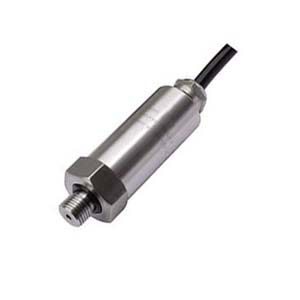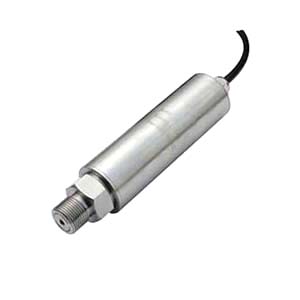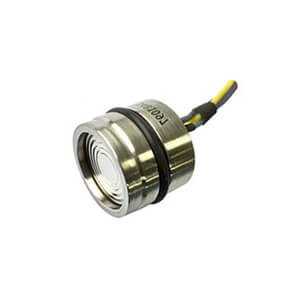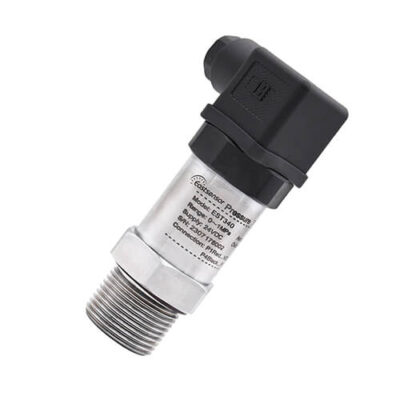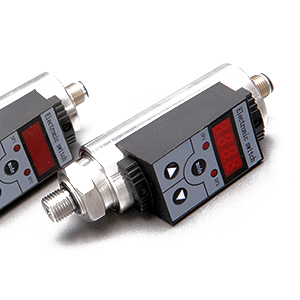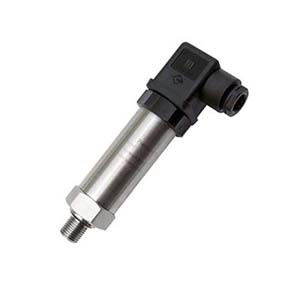O-Ring Introduction
An O-ring is an essential component in pressure sensor design and manufacturing, playing a critical role in ensuring proper sealing and reliable performance. An O-ring is a loop of elastomeric material, typically shaped like a torus (a donut), and is used to create a leak-proof seal between two or more parts of a mechanical system.
In pressure sensors, O-rings are a barrier to prevent the ingress of fluids, gases, or other environmental contaminants and maintain the sensor’s accuracy and stability.
The primary role of an O-ring in a pressure sensor is to provide a reliable seal between the sensing element and the housing or between the housing and the process connection. This seal helps protect the internal components from external factors such as moisture, dust, and chemicals, ensuring the sensor’s longevity and consistent performance in various environmental conditions.
O-rings are primarily used to prevent the loss of a fluid or gas during pressure measurement; meanwhile, O-rings can also be used as dust seals, drive belts or on rotating shafts. Most O-ring seals can be classified into one of the three arrangements shown below.
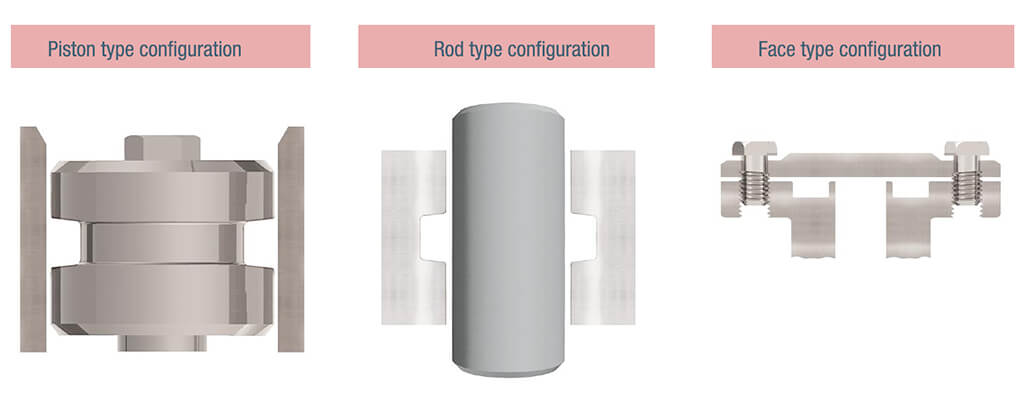
In the line of pressure measurement and control, O-rings are made from a variety of elastomeric materials, such as Nitrile, Viton, EPDM, silicone, and others, each with its own unique properties, advantages, and limitations. The choice of O-ring material is crucial, as it must be compatible with the specific application’s process media, temperature range, and pressure conditions. Factors such as chemical compatibility, temperature resistance, compression set resistance, and mechanical strength should be considered when selecting an appropriate O-ring material for a pressure sensor.
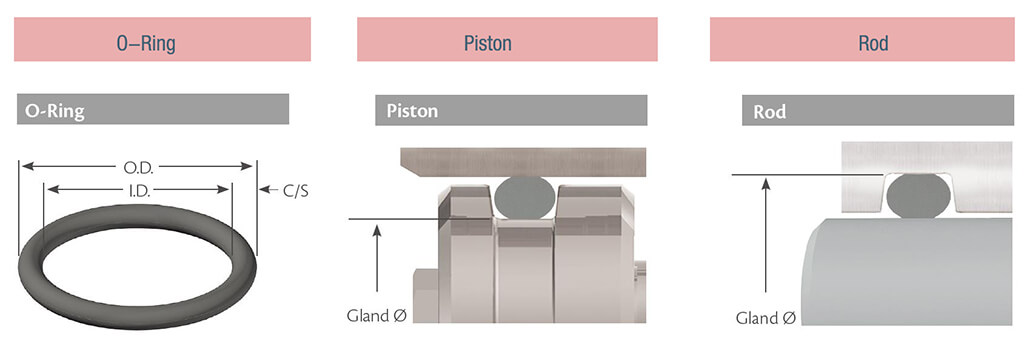
In addition to material selection, the proper sizing and installation of O-rings are essential for achieving an effective seal. O-ring dimensions, including inner diameter, cross-sectional diameter, and groove dimensions, must be carefully considered to ensure optimal sealing performance. Proper installation techniques are also critical to avoid damage to the O-ring or sensor components and maintain the seal’s integrity.
O-Ring Types & Features
Various types of O-rings are available in the market, mainly categorized based on their material composition. Here are some common O-ring materials and their key properties:
Nitrile (NBR):
- Operating temperature range: -40°C to 120°C | -40°F to 248°F
- Good resistance to petroleum-based oils and fuels
- Presently the most widely used elastomer in the seal industry
- It provides an exceptional balance of good mechanical properties, wear properties and chemical resistance
- Resistant to most mineral oils and greases
- Do not use with glycol-based brake fluids and strong acids
- Not suitable for highly polar solvents or strong acids
- Low temperature nitrile compound available with a minimum temperature of -54°C/65°F
Fluorocarbon (FKM or Viton):
- Operating temperature range: -20°C to 200°C | -15°F to 400°F
- Excellent resistance to high temperatures and chemicals
- Excellent resistance to higher temperatures, petroleum oils, and gasoline
- Wide range of chemical resistance
- Excellent ozone, weather, and aging resistance
- Poor compatibility with H2S over 2%, amines, acetone, hot water, and steam
- Poor low temperature characteristics
- Low temperature fluorocarbons are available with a minimum temperature of -40°C/-40°F
- Not recommended for low temperatures or exposure to ketones
Ethylene Propylene (EPDM):
- Operating temperature range: -50°C to 150°C | -65°F to 302°F
- Good resistance to weathering, ozone, and water-based chemicals
- Excellent resistance to ozone, hot water, steam, and aging
- Commonly used with brake fluids and refrigerants
- Poor resistance to petroleum fluids and mineral oils
- Not suitable for petroleum-based oils or fuels
Silicone (VMQ):
- Operating temperature range: -60°C to 225°C | -85°F to 450°F
- Excellent flexibility and resistance to extreme temperatures
- Excellent resistance to oxidation and ozone degradation
- Wide temperature range
- Most commonly used in static applications due to its poor tensile strength and wear resistance
- Popular for food and medical applications
- Not recommended for dynamic sealing applications or exposure to fuels
Polyurethane (PU,AU,EU):
- Good resistance to wear, extrusion, and tear
- Operating temperature range: -40°C to 90°C | -65°F to 220°F
- Thermoplastic elastomer with higher tensile strength, toughness, and wear resistance
- Good combination of hardness and elasticity
- Good low temperature flexibility
- Limited resistance to high temperatures and some chemicals
- Used in high pressure hydraulic systems where parts are subject to wear
Perfluoroelastomer (FFKM or Kalrez):
- Operating temperature range: -20°C to 327°C | +5°F to 590°F
- Exceptional resistance to chemicals and high temperatures
- High cost and not suitable for low-temperature applications
- Broadest chemical resistance of any elastomeric material
- High temperature compounds available up to 325°C/617°F
- Combines the sealing integrity of elastomers with chemical resistance approaching that of PTFE
- Not suitable with liquid sodium and potassium, fluorinated solvents, and refrigerants
O-Ring selection in view of sensing technology
The table below shows the common O-Ring materials used for various sensing technologies, along with model examples, material used, duration, temperature range, and their pros and cons. This information can help you choose the appropriate O-Ring material for your specific application based on the sensing technology employed. Keep in mind that the material compatibility with the sensing technology and the media being measured is crucial for the proper functioning of the pressure sensor.
| Sensing Technology | O-Ring Material | Model Example | Material Used | Duration | Temperature Range | Pros | Cons |
|---|---|---|---|---|---|---|---|
| Capacitive Pressure Sensors | EPDM | EPDM-70 | Ethylene Propylene | Long | -50°C to 150°C | Good water & steam resistance | Not for petroleum-based oils or fuels |
| Piezoresistive Pressure Sensors | NBR | NBR-70 | Nitrile | Long | -40°C to 120°C | Good oil & fuel resistance, cost-effective | Not for polar solvents or strong acids |
| Optical Pressure Sensors | FKM | FKM-75 | Fluorocarbon | Long | -20°C to 200°C | Excellent chemical resistance, high temp. | Not for low temperatures or ketones |
| Strain Gauge Pressure Sensors | PU | PU-90 | Polyurethane | Long | -40°C to 90°C | Excellent abrasion resistance, good flexibility | Limited high temp. and chemical resistance |
| Resonant Pressure Sensors | FFKM | FFKM-80 | Perfluoroelastomer | Long | -20°C to 327°C | Exceptional chemical & temperature resistance | High cost, not for low-temperature applications |
| Piezoelectric Pressure Sensors | VMQ | VMQ-60 | Silicone | Long | -60°C to 225°C | Wide temperature range, low toxicity | Not for dynamic sealing or fuels |
O-Ring selection based on industry applications
The table below shows the common O-Ring materials used in various industries, model examples, material used, duration, temperature range, and their pros and cons. This information can help you choose the appropriate O-Ring material for your specific application based on industry requirements.
| Industry | O-Ring Material | Model Example | Material Used | Duration | Temperature Range | Pros | Cons |
|---|---|---|---|---|---|---|---|
| Automotive | NBR | NBR-70 | Nitrile | Long | -40°C to 120°C | Good oil & fuel resistance, cost-effective | Not for polar solvents or strong acids |
| Oil & Gas | FKM | FKM-75 | Fluorocarbon | Long | -20°C to 200°C | Excellent chemical resistance, high temp. | Not for low temperatures or ketones |
| Water Applications | EPDM | EPDM-70 | Ethylene Propylene | Long | -50°C to 150°C | Good water & steam resistance | Not for petroleum-based oils or fuels |
| Aerospace | VMQ | VMQ-60 | Silicone | Long | -60°C to 225°C | Wide temperature range, low toxicity | Not for dynamic sealing or fuels |
| Food & Beverage | VMQ | VMQ-FDA | Silicone | Long | -60°C to 225°C | FDA approved, low toxicity, wide temp. range | Not for dynamic sealing or fuels |
| Chemical Processing | FFKM | FFKM-80 | Perfluoroelastomer | Long | -20°C to 327°C | Exceptional chemical & temperature resistance | High cost, not for low-temperature applications |
| Semiconductor | FFKM | FFKM-75 | Perfluoroelastomer | Long | -20°C to 327°C | Exceptional chemical & temperature resistance | High cost, not for low-temperature applications |
| Hydraulics & Pneumatics | PU | PU-90 | Polyurethane | Long | -40°C to 90°C | Excellent abrasion resistance, good flexibility | Limited high temp. and chemical resistance |
Common O-Ring Failures
O-rings, often made of elastomeric materials, provide sealing between two mating components by applying a mechanical barrier to limit the movement of fluids or gases. In the context of pressure sensors, O-rings play a vital role in ensuring that the sensor can accurately measure and maintain pressure levels without leakage, to choose the best O-Ring for a pressure sensor, you must be, not only, familiar with the importance of O-rings in various applications, also know the common failures of O-Ring like extrusion, compression, chemical degradation etc.
Extrusion and Nibbling:
This occurs when high-pressure fluid or gas forces the O-ring material into the narrow clearance between mating components. It can lead to the O-ring losing its shape and subsequently failing to seal the system. In pressure sensors, extrusion can cause inaccurate readings or device malfunctions.
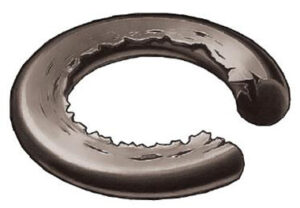
- Description: The seal develops ragged edges, generally on the low-pressure side, which appear tattered.
- Contributing Factors: Excessive clearances, excessive pressure, low modulus/hardness elastomer, excessive gland fill, irregular clearance gaps, sharp gland edges, improper sizing.
- Suggested Solutions: Decrease clearances, higher-modulus/hardness elastomer, proper gland design, use of polymer backup rings.
There are different methods to counter O-ring extrusion. One of these methods is to increase the durometer rating of the O-ring. However, as the durometer is increased, the O-ring can become less malleable. Another option would be the use of anti-extrusion devices. These are thin rings made of hard plastic materials such as PTFE, nylon, and PEEK. Once in place these rings will provide essentially zero clearance.
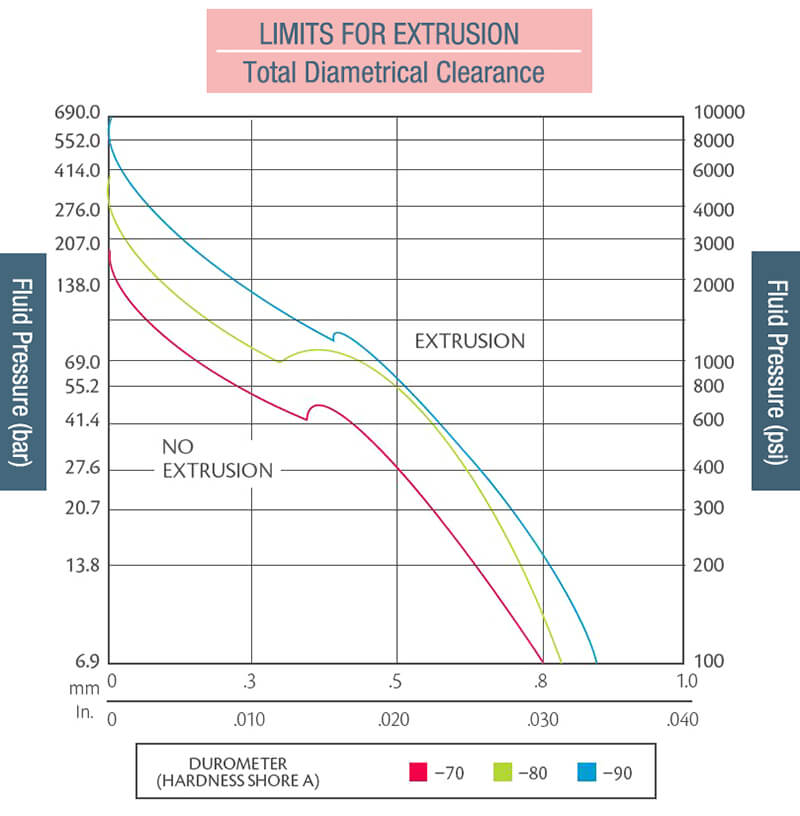
Compression set:
A compression set occurs when the O-ring loses its ability to return to its original shape after being subjected to continuous compression. It can be due to excessive heat or because of the material aging. Since pressure sensors depend on the O-ring’s sealing capabilities, a high compression set can cause inaccurate measurements, leakages, and overall device failure.
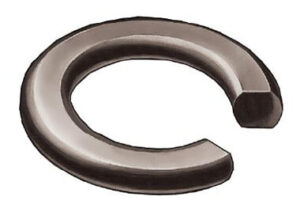
Description: The seal exhibits a flat-sided cross-section, the flat side corresponds to the mating seal surfaces.
Contributing Factors: Excessive compression, excessive temperature, incompletely cured elastomer, elastomer with high compression set, excessive volume swell in chemical.
Suggested Solutions: Low compression set elastomer, proper gland design for the specific elastomer, confirm material compatibility.
Fracturing and Cracking:
Fractures and cracks can develop within the O-ring due to various factors such as excessive cold or heat exposure, incorrect sizing, poor installation, or damage during installation. In pressure sensors, a compromised O-ring can lead to fluid leakage or device failure.
Let’s take poor installation, for example:
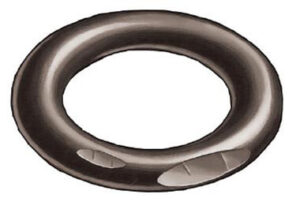
- Description: The seal or parts of the seal may exhibit small cuts, nicks, or gashes.
- Contributing Factors: Sharp edges on the glands or components, improper sizing of elastomer, low-modulus/hardness elastomer, elastomer surface contamination.
- Suggested Solutions: Remove all sharp edges. Proper gland design, proper elastomer sizing, higher-modulus/hardness elastomer.
Chemical degradation:
O-ring material can degrade due to exposure to corrosive chemicals, reducing the sealing effectiveness, swelling, or even disintegration of the O-ring. In pressure sensors, chemical degradation can contribute to leakages and inaccurate pressure measurements.
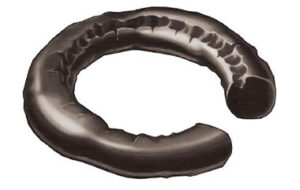
- Description: The seal may exhibit many signs of degradation including blisters, cracking, voids or discoloration. In some cases, the degradation is observable only by measurement of physical properties.
- Contributing Factors: Incompatibility with the chemical and/or thermal environment.
- Suggested Solutions: Selection of a more chemically resistant elastomer.
Abrasion:
O-rings can experience abrasion due to friction between mating surfaces, resulting in erosion of the elastomeric material. In pressure sensors, abrasion can lead to fluid leakage, inaccurate pressure readings, and potential device failure.
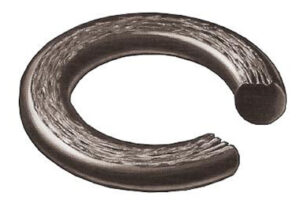
- Description: The seal or parts of the seal exhibit a flat surface parallel to the direction or motion. Loose particles and scrapes may be found on the seal surface.
- Contributing Factors: Rough sealing surfaces, excessive temperature, process environment containing abrasive particles, dynamic motion, poor elastomer surface finish.
- Suggested Solutions: Use recommended gland surface finishes, consider internally lubed elastomers, eliminate abrasive components.
How to prevent or mitigate the failures in pressure sensors
Material selection:
Choose an O-ring material that is compatible with the fluids, gases, and temperatures involved in the application. In pressure sensors, common materials include Nitrile, Viton, EPDM, and Silicone, offering different combinations of chemical resistance, thermal stability, and mechanical properties.
For details and comparison, you can check the below table of common O-ring technical data & key properties.
| Type | Material | Temperature Range | Chemical Resistance | Abrasion Resistance | Cost | Highlight Features | Suitable Industries | Limitations |
|---|---|---|---|---|---|---|---|---|
| Nitrile (NBR) | Acrylonitrile Butadiene | -40°C to +120°C | Good | Good | Low | Good chemical and oil resistance | Automotive, industrial, hydraulics | Poor resistance to ozone and UV light |
| Silicone (VMQ) | Silicone elastomer | -60°C to +225°C | Fair | Fair | High | Excellent temperature resistance | Electronics, aerospace, automotive | Poor tensile strength, tear resistance |
| Fluorocarbon (FKM/Viton) | Fluorinated hydrocarbon | -20°C to +200°C | Excellent | Good | High | Excellent chemical and heat resistance | Automotive, aerospace, chemical | Not suitable for low temperatures |
| Ethylene Propylene (EPDM) | Ethylene Propylene diene monomer | -55°C to +150°C | Good | Fair | Low | Excellent ozone, UV, and weather resistance | Automotive, water systems, HVAC | Poor resistance to oils and fuels |
| Neoprene (CR) | Polychloroprene | -40°C to +120°C | Good | Good | Good | Good resistance to ozone, UV, and weather | Refrigeration, automotive, marine | Moderate chemical and temperature resistance |
| Polyurethane (AU/EU) | Urethane elastomer | -30°C to +100°C | Fair | Excellent | Medium | Excellent abrasion and tear resistance | Hydraulic systems, automotive | Poor resistance to high temperatures |
| Perfluoroelastomer (FFKM) | Fully fluorinated elastomer | -20°C to +330°C | Exceptional | Good | Very High | Exceptional chemical and heat resistance | Semiconductor, chemical, aerospace | High cost, limited low-temperature performance |
| Hydrogenated Nitrile (HNBR) | Hydrogenated Acrylonitrile Butadiene | -40°C to +150°C | Good | Fair | Medium | Improved ozone, UV, and chemical resistance compared to NBR | Automotive, oil and gas, industrial | Limited resistance to polar solvents, strong acids |
Size and design:
Proper sizing and tolerances are crucial for O-ring performance. Follow established guidelines and standards for O-ring size selection, groove design, and gland dimensions, such as ISO 3601, AS568, and JIS standards.
In the industries, ISO 3601, AS568, and JIS standards are international standards that provide essential information for selecting and designing O-rings and their corresponding grooves. They cover important aspects such as dimensions, tolerances, material specifications, and quality assurance criteria. Here are some useful knowledge points about these standards in relation to O-rings:
| Standard | Description | Dimensions | Tolerances | Material Specifications |
|---|---|---|---|---|
| ISO 3601 | Guidelines for O-ring sizes and quality acceptance criteria provided by the International Organization for Standardization (ISO). | Specifies a range of O-ring sizes, identified by an O-ring identification number (ID). Covers inside diameter (ID), cross-section diameter (CS), and tolerances. | Establishes tolerances on O-ring dimensions and surface irregularities. | Does not specify material types; focuses only on dimensions and tolerances. |
| AS568 | Standardized system for O-rings developed by the Society of Automotive Engineers (SAE), specifically for Aerospace applications but widely applicable in other industries as well. | Provides a list of 379 standard sizes, known as dash numbers, for O-rings. Covers inside diameters (IDs) and cross-sectional diameters (CSs). | Specifies tolerances for both ID and CS dimensions. | Does not specify material types; focuses only on dimensions and tolerances. |
| JIS B 2401 | Japanese Industrial Standards (JIS) for O-ring sizes and tolerances, focused on general industrial applications and developed by the Japanese Standards Association (JSA). | Establishes dimensions (ID and CS) and tolerances for a range of standard O-ring sizes. | Specifies tolerances for O-ring dimensions, ensuring interchangeability and compatibility in various applications. | Does not specify material types; focuses only on dimensions and tolerances. |
Installation:
Ensure correct O-ring installation and lubrication during assembly to minimize damage, distortion, or stress on the O-ring. In pressure sensors, you need to pay close attention to the mating surfaces, clean and smooth sealing areas, and firmly secure components together.
- Choose the appropriate O-ring size based on the specific application and the applicable standards (ISO 3601, AS568, or JIS B 2401).
- Select the suitable O-ring material compatible with the operating temperature, pressure, and chemical environment.
- Inspect the O-ring for any visible defects such as cracks, cuts, or abrasions before installation.
- Check the dimensions of the O-ring to ensure it meets the specified tolerances in terms of ID and CS dimensions.
- Ensure the components’ mating surfaces are clean and free of any debris, burrs, or sharp edges that could damage the O-ring during installation.
When installing, do not roll or stretch the O-ring excessively to prevent damage or distortion.
Use tools such as O-ring installation cones, picks, or sleeves to properly place the O-ring in its groove without causing damage or pinching. Make sure the O-ring is seated correctly and without twists or kinks in the groove.
During assembly, ensure a slow and steady pace to minimize stress or distortion of the O-ring.
Lubrication:
Use a suitable lubricant compatible with the O-ring material and the application’s environment. Lubricants can help prevent damage, reduce friction, and ease assembly.
Apply a thin, uniform layer of lubricant on the O-ring’s surfaces and the components’ grooves and mating surfaces.
Avoid using excess lubricant as it can attract dirt or debris, causing contaminations and potential damage to the O-ring.
Visually inspect the O-ring after installation to ensure it is seated properly and free of damage or distortion.
Perform a pressure or vacuum test, if applicable, to verify the O-ring’s sealing effectiveness and ensure there are no leaks.
Wrap up
To select the appropriate O-Ring, consider factors such as industry and sensing technology. For example, in the A/C and refrigerator industry, O-Rings should be compatible with refrigerant gases, withstand low temperatures, and have good chemical resistance. When choosing an O-Ring for a specific sensing technology, it is necessary to consider the operating conditions, such as temperature, pressure, and chemical exposure, to ensure optimal performance.
Understanding the key technical data for O-Rings is essential when selecting the right one for your pressure sensor. Pay attention to dimensions, tolerances, material properties, temperature range, and compatibility with the media. Make sure to consider potential risks and limitations, such as material incompatibility, improper sizing, installation damage, shelf life, temperature and pressure fluctuations, lubrication, extrusion, compression set, and the need for regular maintenance and inspection.
Remember to store O-Rings properly, use compatible lubricants, and inspect them regularly to ensure optimal performance and longevity. By considering these factors, you can make informed decisions when choosing and using O-Rings in your pressure sensor applications, resulting in reliable and efficient operation.
At last, understanding common O-ring failures for pressure sensors is crucial for achieving reliable and accurate pressure measurements. Regular inspection and maintenance, appropriate material selection, and proper installation techniques can all contribute to the optimal performance and longevity of the O-ring seals.

